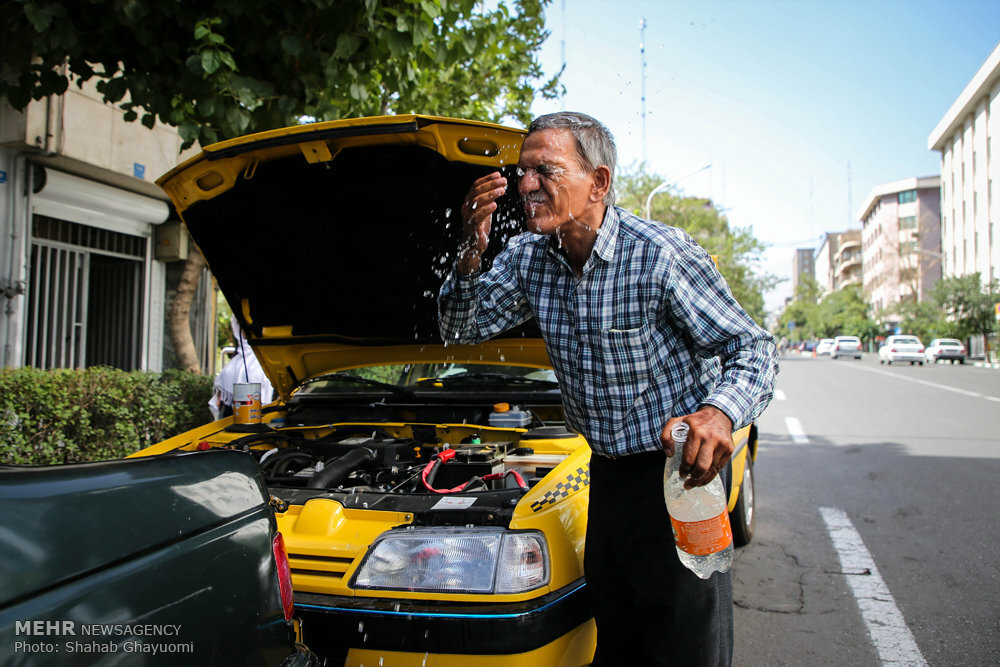Will Iran set all-time heat records this summer?

TEHRAN – Following torrential rain and flooding in the country, some experts say that this summer will beat the heat records, with sweltering temperatures scattering around the country.
Based on the latest data published by National Drought Warning and Monitoring Center affiliated to Iran’s Meteorological Organization, since the current crop year (September 23, 2018), precipitation in the country increased to 296.2 from 139.2 millimeters in the previous water year, demonstrating a 112.8 percent rise.
The amount also raised in comparison to the long-term average of 211.8 mm, amounting to 39.8 percent.
The unprecedented rain poured over the country have caused some experts to claim that the country will witness hottest temperatures ever recorded over the past years during the summer, being affected by climate change.
However, Iran Meteorological Organization (IMO) officials believe that recent heavy rainfalls do not necessarily lead to a sizzling summer, so the claims are not precise.
Ahad Vazifeh, a weatherman with the IMO, told Khabaronline on Tuesday that the claims are not scientific, therefore, the country will face temperature rise this summer as same as the previous years, but not expecting to hit scorching degrees.
“Over the past decades, temperature increased to some extent in Iran annually due to greenhouse gas emissions, which is expected to happen this year, as well,” he lamented, adding, but no extraordinarily heat would hit the country.
Temperature variation across Iran
Sadeq Ziaeian, the director of the national center for drought and crisis management, affiliated to IMO said in July 2018 that Iran has experienced an average 1.3 degrees on the Celsius scale temperature rise during the past 10 months (September 23, 2017 to July 22, 2018) compared to the long-term mean.
Over the aforesaid period, all Iranian provinces have faced an increase in temperature, he added.
Commenting on the reasons for rising temperatures in Tehran and other provinces of Iran in the first month of summer, he highlighted that upward temperature trend across the entire country, is mainly caused by climate change, but synoptic factors, including the subtropical ridge (a significant belt of atmospheric high pressure situated around the latitudes), also affect the issue.
However, Ziaeian in late April announced that Iran has experienced an average 0.4 degrees on the Celsius scale temperature decline during the first month of the current Iranian calendar year (starting on March, 21) compared to the long-term means.
Will Iran hit world’s temperature rise record?
This is while, researches show that Iran will face excessive heat over the next decades; the same thing happened in recent years not only in Iran, but also in the world. Temperature has increased over the past decade in the world, but various reports show that the rate is more than the global average in Iran.
According to an ongoing temperature analysis conducted by scientists at NASA’s Goddard Institute for Space Studies (GISS), the average global temperature on Earth has increased by about 0.8° Celsius (1.4° Fahrenheit) since 1880. Two-thirds of the warming has occurred since 1975, at a rate of roughly 0.15-0.20°C per decade.
Earth’s global surface temperature in 2018 was the fourth warmest since modern recordkeeping began in 1880. Global temperatures in 2018 were 1.5 degrees Fahrenheit (0.83 degrees Celsius) warmer than the 1951 to 1980 mean. Globally, 2018's temperatures rank behind those of 2016, 2017 and 2015. The past five years are, collectively, the warmest years in the modern record.
Atmospheric models predict that the earth temperature will increase from 1 to 3.5°C by the year 2100, which is more than temperature changes during the past 10,000 years. Emission of greenhouse gases, production of aerosols in the atmosphere, changes in the earth’s reflection index and thermal pollution are the factors affecting climate change.
Based on the research and assessment carried out by United Nations Convention on Climate Change (UNFCCC) and using the scenarios proposed by Intergovernmental Panel on Climate Change (IPCC), it is estimated that if the CO2 concentration doubles by the year 2100, the average temperature in Iran will increases by 1.5-4.5°C.
Overcoming a changing climate
Alireza Bavani, a climate expert, said that temperature rise which is the major sign of climate change will cause significant changes in the country’s total water resources due to vaporization, which is said to be reduced by 20 percent.
The direct adverse impacts of climate change include changes in precipitation and temperature patterns, water resources, sea level rise and coastal zone, agriculture and food production, forestry, drought frequency and intensity and human health and biodiversity loss, while the indirect adverse economic impacts, he explained.
Although, Iran may not experience a sizzling summer this year, which is said to hit the record highs, climate change and emissions resulting in some extraordinarily hot weather are worrisome, and the country must think of solutions to prevent moving from a normally mild weather to a scorching one, which will not only hurt the environment and necessary resources, but threat the people lives.
Adapting to extreme temperatures requires a combination of reducing emissions, using green vehicles, restoring wetlands, conserving the lakes, building drains and sewers to overcome water shortages and the other consequences of climate change, and related devices must be faster to catch on.
FB/MG
Leave a Comment